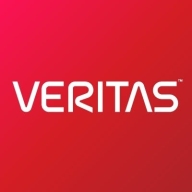

Teradata and Veritas Backup Exec compete in the data management and backup software category. Teradata generally has an edge due to its advanced data analytics capabilities and scalability.
Features: Teradata is known for its advanced parallel processing capabilities, massive scalability, and robust performance, especially in handling large data volumes and enabling complex queries. Its shared-nothing architecture supports diverse workloads and real-time analytics. Veritas Backup Exec is focused on efficient backup and recovery for physical and virtual server environments. It offers straightforward disk-to-disk-to-tape solutions, fast restoration processes, and data compression options.
Room for Improvement: Teradata users express the need for more cost-effective solutions and better cloud integration. Improving support for unstructured data and enhancing cloud offerings are also desired. Veritas Backup Exec could improve its support for modern cloud environments, simplify the user interface, and enhance features like synthetic backups to deduplication media.
Ease of Deployment and Customer Service: Teradata offers flexibility with on-premises, hybrid, and cloud deployment options, receiving praise for its professional support team despite occasional delays. Veritas Backup Exec is known for comprehensive backup solutions and excellent customer support but can improve its user-friendliness for new users.
Pricing and ROI: Teradata is perceived as expensive but valued for its performance and reliability in large-scale deployments, with pricing models aligning with industry standards. Veritas Backup Exec is seen as affordable for small to medium businesses, though additional feature costs can be significant. Both solutions provide good ROI, enhancing performance, reliability, and customer satisfaction.
The technical support from Teradata is quite advanced.
Customer support is very good, rated eight out of ten under our essential agreement.
I see good technical engineer support resolving issues.
This expansion can occur without incurring downtime or taking systems offline.
Scalability is complex as you need to purchase a license and coordinate with Teradata for additional disk space and CPU.
Now in the current version, I can run more than one process for backup in one job for more virtual machines.
I find the stability to be almost a ten out of ten.
The workload management and software maturity provide a reliable system.
Unlike SQL and Oracle, which have in-built replication capabilities, we don't have similar functionality with Teradata.
I aim to monitor the functionality and probably find something this year to monitor logs from our backup system and storage and notify us about any unusual activities.
Some technology improvement is needed to manage my basic business continuity plan.
We need to have a proper image backup with a documented restore procedure, as some users were unable to do the image backup restoration due to driver issues or similar challenges.
Initially, it may seem expensive compared to similar cloud databases, however, it offers significant value in performance, stability, and overall output once in use.
Teradata is much more expensive than SQL, which is well-performed and cheaper.
When I compare it with others, it is twice or three times cheaper.
The setup is a bit expensive at a corporate price
The data mover is valuable over the last two years as it allows us to achieve data replication to our disaster recovery systems.
Veritas has technical compatibility with my hardware and other systems.
My customers find the normal file system backup features of Veritas Backup Exec effective and valuable.
It has a lot of functions and security measures, which ensure our backups are secure.


Teradata is a scalable data analytics platform designed to meet enterprise demands for large-scale data management and processing, focusing on performance, scalability, and security for complex query executions.
As a leading data warehousing solution, Teradata integrates advanced analytics enabling organizations to derive insights from massive datasets. It supports high-volume data workloads with its architecture optimized for analytical queries. Users benefit from its robust scalability, allowing seamless expansion as data grows. Teradata's SQL engine is compatible with a wide range of data types, ensuring flexibility in data analysis. With advanced security measures, it protects sensitive data across various environments, providing peace of mind to users handling critical information.
What are the most important features of Teradata?Teradata is widely used in industries like finance, telecommunications, and healthcare, where data-driven decisions are critical. Companies leverage its robust analytics capabilities to enhance customer experiences, streamline operations, and ensure compliance with regulatory requirements. In these sectors, quick access to data insights can significantly impact competitive advantage.
Veritas Backup Exec is a unified data backup and recovery solution designed for small to midsize businesses. The software offers data protection for customers whether the data exists in physical, virtual, or cloud environments. Its main purpose is to ensure your business-critical data is never at risk of being lost, stolen, or corrupted.
Veritas Backup Exec Features
Veritas Backup Exec has many valuable key features. Some of the most useful ones include:
Veritas Backup Exec Benefits
Some of the benefits of using Veritas Backup Exec include:
Reviews from Real Users
Below are some reviews and helpful feedback written by Veritas Backup Exec users.
An IT Network Analyst at a manufacturing company says, “The backup potential of the solution is very good. It's protected us in the past very well and allowed us to get up and running after an attack with minimal loss. As far as if we need to restore a file, the solution absolutely has improved the way our organization functions. It saves us a lot of time. We're backing up all of our servers with it.”
PeerSpot user Masoud G., Senior Network Administrator at MapnaBE, mentions, “I prefer to use a tape library and Veritas Backup Exec is fully compatible with different tape libraries. So I prefer this software. It also has easy user and file recovery.”
Kayode O., Chief Technology Officer at a tech company, explains, “This solution creates a differential backup to reduce storage requirements. This solution is not complex and you do not have to be too technical to use it. Veritas offers granular restore, which is an option that many other solutions do not have. It allows you to restore, for example, a single SharePoint document, rather than an entire site.”
Rowland G., Product Brand Manager at Epsidon Technology Distribution, states, “The one thing for the last 12 months which has been very good for Veritas was the instance-based license. This means that you're able to license per instance, not only per physical server. And also, the incremental backup which they introduced for virtual servers, where it makes it much quicker to restore, it just automatically is able to mount it back to the original backup. This makes it much quicker when you're doing the restore.”
We monitor all Backup and Recovery reviews to prevent fraudulent reviews and keep review quality high. We do not post reviews by company employees or direct competitors. We validate each review for authenticity via cross-reference with LinkedIn, and personal follow-up with the reviewer when necessary.